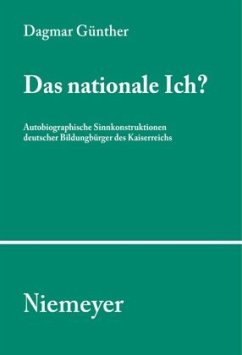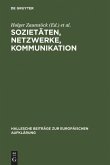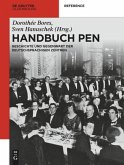As a precarious part of affirming imperial patriotism (1870-1880), defamed or little-respected historical novels decisively promoted historical reflection and identity formation. These novels expounded the problems of the contemporary handling of history and, therefore, stand at the beginning of the crisis of historism. The current dispositive analysis shows the highly reflexive intertwining of affirmation and subversion, to which the novels are connected with Nietzsche's historical writings, Droysen's historical semiotics, and Menzel's turning away from historical painting, but also those with monument dedications, the jubilee celebration of 1870/71, publishing house advertisements, professor novels, newspaper articles and newspaper illustrations.
Als prekärer Teil des affirmativen Reichspatriotismus (1870-1880) trieben diffamierte oder gering geachtete Geschichtsromane wie Dahns Kampf um Rom, Fontanes Vor dem Sturm, Freytags Ahnen oder Sacher-Masochs Weiblicher Sultan Geschichtsreflexion und Identitätsbildung entscheidend voran. Wie Meyers Jürg Jenatsch problematisieren sie den zeitgenössischen Umgang mit Geschichte und stehen damit am Beginn der Krise des Historismus.
Die vorliegende Dispositivanalyse weist das hochreflexive Ineinander von Affirmation und Subversion nach, zu dem sich die Romane mit Nietzsches Historienschrift, Droysens Geschichtssemiotik, Menzels Abkehr vom Geschichtsgemälde, aber auch mit Denkmaleinweihungen, den Jubelfeiern 1870/71, Verlagsanzeigen, Professorenromanen, Zeitschriftenartikeln und -illustrationen verschränken. Eingehende Interpretation gängiger und abseitiger Text- und Bilddokumente entwerfen zentrale Elemente der Kulturgeschichte des 19. Jahrhunderts völlig neu.
Als prekärer Teil des affirmativen Reichspatriotismus (1870-1880) trieben diffamierte oder gering geachtete Geschichtsromane wie Dahns Kampf um Rom, Fontanes Vor dem Sturm, Freytags Ahnen oder Sacher-Masochs Weiblicher Sultan Geschichtsreflexion und Identitätsbildung entscheidend voran. Wie Meyers Jürg Jenatsch problematisieren sie den zeitgenössischen Umgang mit Geschichte und stehen damit am Beginn der Krise des Historismus.
Die vorliegende Dispositivanalyse weist das hochreflexive Ineinander von Affirmation und Subversion nach, zu dem sich die Romane mit Nietzsches Historienschrift, Droysens Geschichtssemiotik, Menzels Abkehr vom Geschichtsgemälde, aber auch mit Denkmaleinweihungen, den Jubelfeiern 1870/71, Verlagsanzeigen, Professorenromanen, Zeitschriftenartikeln und -illustrationen verschränken. Eingehende Interpretation gängiger und abseitiger Text- und Bilddokumente entwerfen zentrale Elemente der Kulturgeschichte des 19. Jahrhunderts völlig neu.








